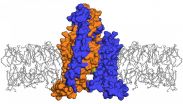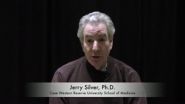INFORMATION:
Funding: Vattikuti Urology Institute
Contributing to this study were Firas Abdollah, Daniel Pucheril, Akshay Sood and Mani Menon at the VUI Center for Outcomes Research Analytics and Evaluation, Henry Ford Health System and Quoc-Dien Trinh at the Harvard Center for Surgery and the Public Health at Brigham and Women's Hospital, Boston.
CONTACT: Dwight Angell, (313) 876-8709, Dwight.Angell@hfhs.org
Common prostate cancer treatment associated with decreased survival in older men
2014-12-03
(Press-News.org) DETROIT - A common prostate cancer therapy should not be used in men whose cancer has not spread beyond the prostate, according to a new study led by researchers at Henry Ford Hospital.
The findings are particularly important for men with longer life expectancies because the therapy exposes them to more adverse side effects, and it is associated with increased risk of death and deprives men of the opportunity for a cure by other methods.
The research study has been published online in European Urology.
The focus of the new study is androgen deprivation therapy (ADT), in which an injectable or implanted medication is used to disrupt the body's ability to make testosterone. ADT is known to have significant side effects such as heart disease, diabetes, increased weight gain and impotence; however a growing body of evidence suggests ADT may in fact lead to earlier death.
Since the 1940s, the therapy has been a mainstay of treatment for prostate cancer that has metastasized, or spread beyond the prostate gland. Still other studies support the use of ADT when it is used as an adjuvant, or in addition to, radiation therapy for higher risk prostate cancer. No evidence exists to support the exclusive use of ADT for low risk or localized prostate cancer.
"The use of ADT as the primary treatment for localized and low risk prostate cancer increased over time, despite known harmful side effects and a lack of data to support such use," says Jesse D. Sammon, D.O., a researcher at Henry Ford Hospital's Vattikuti Urology Institute and lead author of the new study. "In the 1990's it became exceedingly common to use ADT in place of radical prostatectomy or radiation therapy."
Concerns over the possible misuse of ADT alone in the treatment of prostate cancer, as well as a growing awareness of its potential damage, led to changes in Medicare reimbursement policies for ADT in 2004.
This resulted in a 40 percent drop in reimbursement, and a reduction in inappropriate use of ADT from 38.7 percent to 25.7 percent for newly diagnosed localized prostate cancers.
"At the same time, there was a growing awareness of ADT's many possible adverse effects, including decreased libido, anemia and fatigue, and a higher risk of metabolic and cardiovascular disease," Dr. Sammon says.
"In designing our study, we hypothesized that the adverse effects of ADT might be more pronounced in men with longer life expectancies since they would likely be treated with ADT for a longer period- and be exposed to more treatment-related side effects."
Drawing on data from nations largest cancer registry (SEER) (Surveillance, Epidemiology, and End Results) the researchers then linked to records from Medicare and identified 46,376 men diagnosed with localized prostate cancer who did not undergo radical prostatectomy or radiation therapy for prostate cancer, diagnosed between 1992-2009. Among them, 38.5 percent were treated with ADT.
Further statistical analysis confirmed the study's hypothesis, notes Dr. Sammon.
"No evidence supports the use of ADT in men with low risk, localized prostate cancer, while use of this therapy is decreasing over time it is still very common," he says
"We found that primary ADT is associated with decreased survival in men with localized prostate cancer relative to men who receive no active treatment, particularly in men with longer life expectancies. So we concluded that ADT should not be used as a primary treatment for men with prostate cancer that has not spread beyond the prostate or men with moderate to high risk disease undergoing radiation therapy."
ELSE PRESS RELEASES FROM THIS DATE:
NIH-led scientists describe new herpes treatment strategy
2014-12-03
Scientists have developed a novel treatment approach for persistent viral infections such as herpes. Using animal models of herpes simplex virus (HSV) infection, researchers show that blocking the activity of a host cell protein called LSD1 reduces HSV infection, shedding (release of viral particles) and recurrence. LSD1, which is essential for HSV's infectious cycle, modifies certain host proteins that control access to DNA. These modifications, known as "epigenetic" changes, help determine how and when genes are used. The collaborative effort, led by scientists at the ...
New study validates usefulness of genomic medicine in children with neurologic disorders
2014-12-03
Kansas City, Mo. -- December 3, 2014 -- Results from more than 100 families with children affected by a broad range of neurologic and developmental disorders who underwent genomic testing to end their quest for a diagnosis, were published today in Science Translational Medicine. This is the first study to show that a genome-based diagnostic approach directly impacts patient care of both infants and older children with neurologic disorders. Forty-five percent of families received a diagnosis by exome or genome sequencing, fifty percent of those diagnosed had a change in ...
Lethal control of wolves backfires on livestock
2014-12-03
PULLMAN, Wash.--Washington State University researchers have found that it is counter-productive to kill wolves to keep them from preying on livestock. Shooting and trapping lead to more dead sheep and cattle the following year, not fewer.
Writing in the journal PLOS ONE, WSU wildlife biologist Rob Wielgus and data analyst Kaylie Peebles say that, for each wolf killed, the odds of more livestock depredations increase significantly.
The trend continues until 25 percent of the wolves in an area are killed. Ranchers and wildlife managers then see a "standing wave of livestock ...
Koalas selective about eucalyptus leaves at mealtime
2014-12-03
Koala population distribution may be influenced by eucalyptus leaf toxin and nutrient content, especially in areas with low-quality food options, according to a study published December 3, 2014 in the open-access journal PLOS ONE by Eleanor Stalenberg from The Australian National University and colleagues.
Scientists suspect that access to nutritious food plays a role in herbivore distribution and abundance, but there is still some debate over how variation in plant nutritional qualities may influence population distribution. Koalas predominantly eat eucalyptus leaves ...
Arabian Sea humpback whale population may have been isolated for about 70,000 years
2014-12-03
A population of humpback whales that resides in the Arabian Sea may have been isolated for ~70,000 years, according to a study published December 3, 2014 in the open-access journal PLOS ONE by Cristina Pomilla, Ana Rita Amaral, Howard Rosenbaum, and Tim Collins of the Wildlife Conservation Society, the American Museum of Natural History, and their colleagues.
The small, non-migratory population of Arabian Sea humpback whales is currently classified as "Endangered" on the IUCN Red List of Threatened Species. Scientists have limited data on the difficult-to-study population, ...
Scientists concerned that culture of research can hinder scientific endeavor
2014-12-03
Aspects of the culture of research in UK higher education institutions (HEIs) can encourage poor research practices and hinder the production of high quality science, according to scientists who took part in a project exploring the ethical consequences of the culture of research led by the Nuffield Council on Bioethics.
The findings of the project, which included a survey of almost 1000 scientists and others, suggest that scientists are motivated in their work to find out more about the world and benefit society, and that they believe collaboration, multidisciplinarity, ...
Birds conform to local 'traditions'
2014-12-03
Birds learn new foraging techniques by observing others in their social network, 'copycat' behaviour that can sustain foraging 'traditions' that last years, according to a study of how innovations spread and persist in wild great tits (Parus major).
The study involved experiments with eight local populations of great tits in Wytham Woods, Oxfordshire (UK). In five of the populations two male birds were trained to slide a puzzle box door either to the left or to the right. In three control groups two males were captured but not trained. The birds were then released back ...
Atomic-level view provides new insight into translation of touch into nerve signals
2014-12-03
Whether stubbing a toe or stroking a cat, the sensation of touch starts out as a mechanical force that is then transformed into an electrical signal conveying pain or other sensations. Tiny channels in neurons act as translators by helping to formulate that signal to the brain. However, scientists know little about the fine details of how these channels work.
New work at Rockefeller University has revealed that one such channel in humans responds to mechanical force using a never-before-seen mechanism. Researchers led by Roderick MacKinnon, John D. Rockefeller Jr. Professor ...
World's fastest 2-D camera may enable new scientific discoveries
2014-12-03
A team of biomedical engineers at Washington University in St. Louis, led by Lihong Wang, PhD, the Gene K. Beare Distinguished Professor of Biomedical Engineering, has developed the world's fastest receive-only 2-D camera, a device that can capture events up to 100 billion frames per second.
That's orders of magnitude faster than any current receive-only ultrafast imaging techniques, which are limited by on-chip storage and electronic readout speed to operations of about 10 million frames per second.
Using the Washington University technique, called compressed ultrafast ...
Barrier-breaking drug may lead to spinal cord injury treatments
2014-12-03
VIDEO:
NIH-funded scientists developed a promising new drug that may lead to spinal cord injury treatments.
Click here for more information.
Injections of a new drug may partially relieve paralyzing spinal cord injuries, based on indications from a study in rats, which was partly funded by the National Institutes of Health
The results demonstrate how fundamental laboratory research may lead to new therapies.
"We're very excited at the possibility that millions of people ...




